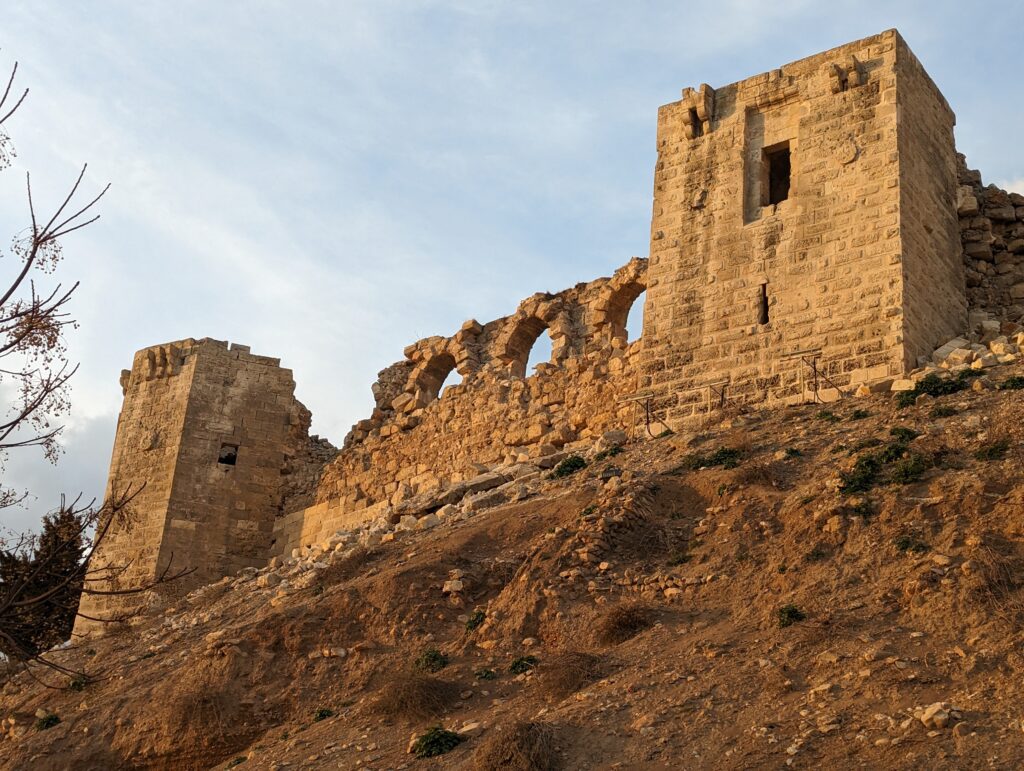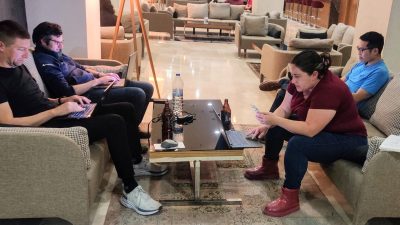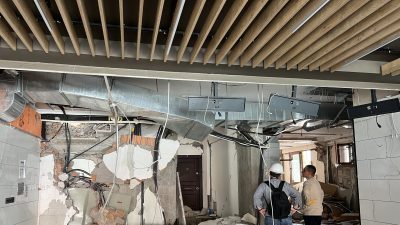March 7, 2023 – Day 2, Team 2
Team 2 left Istanbul early in the morning to fly to Gaziantep, which was our home base for most of the trip. In Gaziantep we met up with Rafael Alaluf, a Turkish structural engineer who works in Istanbul and is a former Degenkolb employee, and headed toward the town of Nurdagi, the town close to the epicenter of the first earthquake.
Nurdagi is a small agricultural town that sits in a large valley surrounded by verdant farmland and bordered by snowcapped mountains to the north. Most of the damage we observed was in mid-rise residential buildings, typically 6 to 8 stories, that consist of concrete frames with clay brick or masonry infills. Many buildings had completely collapsed, but there were several instances where the structural system had performed very well with minimal cracks and deformations, but the nonstructural damage had forced a full evacuation and likely demolition. While life safety was achieved in these buildings, the complete loss of a building being coupled with good structural performance was hard to understand.
A few buildings were noted to use nondeformed bars and these buildings typically performed very poorly. There were also detailing issues, including rebar placement at joints, captive columns, and inadequate hooks. Concrete quality was also noted at several locations including poor aggregate quality (very smooth pea gravel), rock pockets, and concrete placement voids. Lastly, there were also occurrences of pounding, especially when the floors did not align, and the impact was imparted on the adjacent building columns.

Adam holds up a sample of poor aggregate quality that we found in Nurdagi

An example of poor rebar detailing from a heavily damaged concrete column. Note the use of only 90-degree hooks for the transverse reinforcement

Pounding at the top of concrete columns due to seismic sway from the adjacent building

Damage to concrete columns due to the captive column effect, which is when a column’s ability to deform laterally is restricted due to the presence of building components. This commonly occurs at windows and clearstories where the column was confined above and/or below the opening.
Reuters published an article about Nurdagi titled, “Turks Ask How a Boom Town Came Crashing Down in Quake.” It notes that 4,000 residents perished in the earthquake and that part of Nurdagi will be relocated to higher ground (for reference, Nurdagi has a population of ~25,000 residents). Many residents told Reuters that the town experienced a population boom in the last twenty years, partially spurred by the town’s relaxation on its building height restrictions, which caused them to wonder if the rapid construction had any correlation with the number of buildings that collapsed. The article also noted that the mayor of the town was arrested and replaced two weeks ago over substandard construction practices. For Team 2, seeing the statistics presented by the article manifest itself in physical form was a stark reminder that our built environment can be made fragile for various reasons, even well-intentioned ones like the desire to build rapidly to accommodate a growing populace.
We ended the day by returning to view the damage of the Gaziantep Castle. This castle was built in the second century and suffered damage to its walls, which had partially crumbled and fell down the hillside. With the sun setting, we returned to our hotel to ruminate on what we had seen in our first full reconnaissance day.

Gaziantep Castle at sunset, shown here with partial damage due to the earthquake
Learn more about Degenkolb’s reconnaissance trips to Turkey and stay tuned for more updates.



